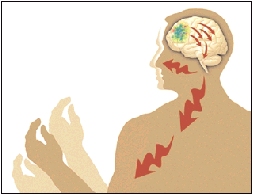What Is a Partial Seizure?
What is a Partial Seizure (Focal Seizure)?

Have you or someone else noticed part of your body moving or shaking involuntarily? Do you have short periods when you feel confused, have memory loss, or appear to act unusual? Are you sometimes unaware of your actions or do you even pass out for a few moments? If so, you may be experiencing partial seizures. These occur when you have a condition called epilepsy. Partial seizures can be scary and frustrating. The good news is that they can usually be controlled.
How the brain works
Your brain uses short bursts of electricity as signals. These signals allow areas of the brain to communicate with each other. These signals also travel from the brain to the rest of your body.
When part of the brain “overloads”
Sometimes the signals become excessive. When this happens in one area of the brain, it is called a partial seizure. The excessive signals cause part of the body to work abnormally. Then you may twitch, feel confused, or pass out for a moment. Partial seizures can present in many ways.
-
Simple partial seizures often have only a few minor symptoms, such as hand twitching, visual changes, smelling an unusual odor, or feeling a sense of déjà-vu. "Simple" means there is no loss of consciousness.
-
Complex partial seizures are often associated with more abnormal behavior. They may also affect your mental functioning to some degree. "Complex" means you may have a lowered level of consciousness, mental confusion, or loss of memory.
Partial seizures can be controlled
Seizures can be caused by irritation or damage to the brain from injury, scar formation, tumors, stroke, or infection. Usually the cause is unknown. However, most partial seizures can be successfully treated. With treatment, most people with seizures lead normal, fulfilling lives.
Updated:
January 23, 2020
Sources:
Maguire, M., Epilepsy (Generalized and Partial), American Family Physician (2011)
Reviewed By:
Sather, Rita, RN,Shelat, Amit, MD